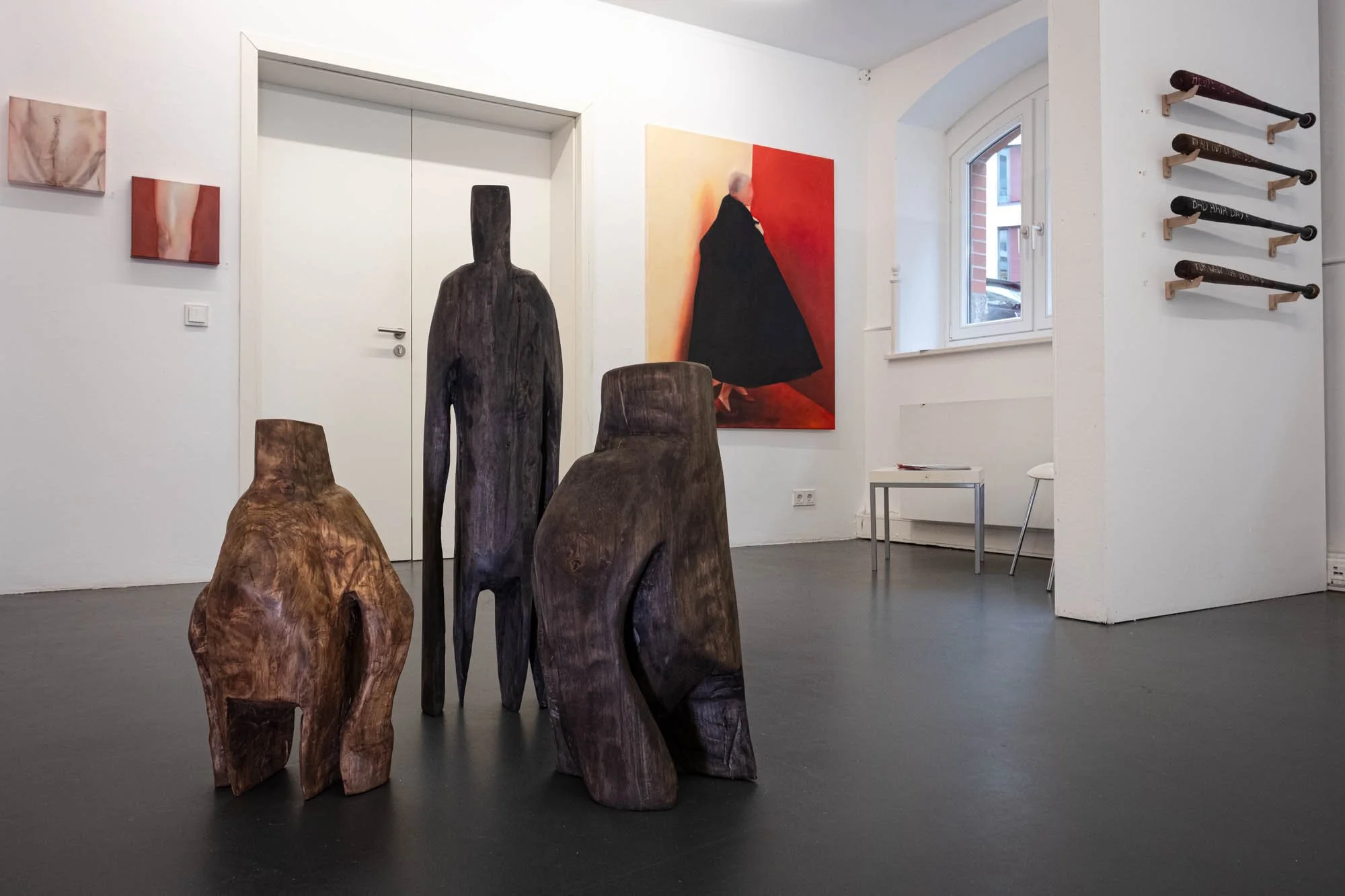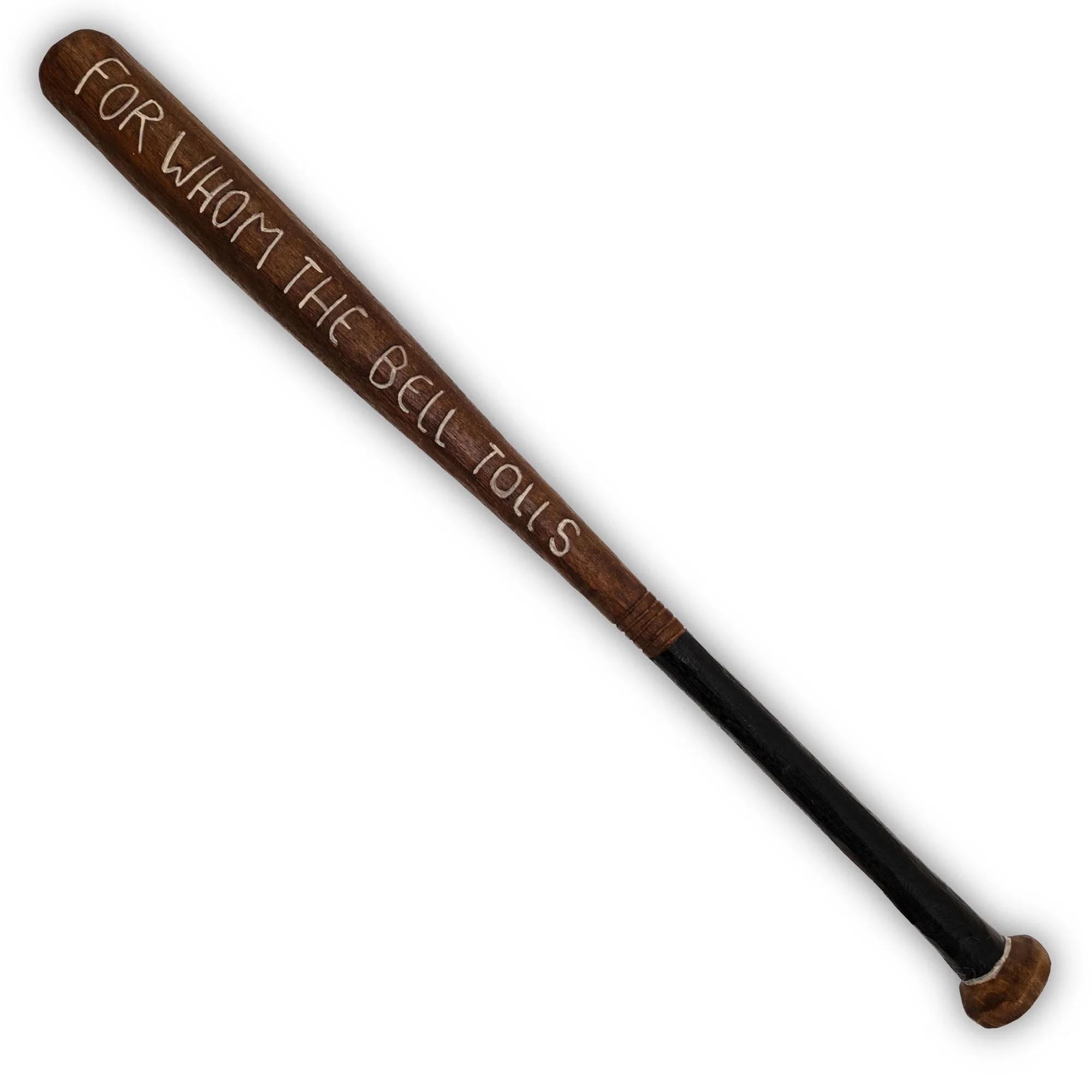This is the content from my latest newsletter. That you can now also listen to. So. First here are two links with the audio files (in english and german). There are some pictures below, illustrating my words. And then the text for those who like to read! (reading time approx. 6-7 min.)
Update 10.10.2025: I added a video from the “making of: Les Arbres de Max” (below).
Enjoy!
PS: To subscribe to my newsletter, click here!
Les Arbres de Max, 2025
Wood, Acrylic paint, 50 x 70 x 3 cm
Maybe some of you have noticed this before: throughout my entire body of work over the past decades, I’ve always been experimenting with new techniques, storytelling, and different forms of expression. This is a very important part of my artistic practice – probably because I’ve always been quite restless… and it somehow gets, hmm… more dynamic the older I get.
Maybe because time feels shorter now, and there’s still so much left to do.
As an artist, you eventually have to confront your own mortality. Which is totally fine, really – but no one wants to leave this world with an unfinished sentence on their lips.
(Note: I am not sick nor dying. Just contemplating.)
Of course, this constant experimentation can seem erratic. Even confusing.
But that’s not the point – at its core, it’s really just my deep restlessness, a never-ending curiosity, the feeling that there’s always more out there.
And so, through trying, failing, destroying, restarting, doubting – eventually, somehow, I get to a form of success. Whatever that might look like.
And yes, there’s also this huge urge to communicate. The narcissistic side of my artistic soul. You need that, too, in order to create uncompromising work – work with a point of view that doesn’t have to please everyone, just like a finished painting can’t and shouldn’t aim to please everyone.
And I don’t just mean aesthetically.
Just to be clear: I’m only talking about myself here. Every artist should absolutely decide for themselves how they want to work and position themselves. There are definitely easier paths than mine, but probably also far more complicated ones.
More than 15 years ago, I gave up the practice of „pure“ painting to focus on an unusual wood-based technique – for me, that was the beginning of a great sense of freedom. I felt like I was discovering something entirely new for myself, and myself alone. Since then, I’ve developed my very own techniques, experimenting with all kinds of formats: flat works, wall sculptures, standard sculptures, dioramas, prints, complex wooden constructions, hybrids of painting and woodcut. And even today, I can’t claim that I’m anywhere near a finish line. Which is a really good thing.
Three years ago, I added classic painting back into my “portfolio.” They are a bit lesser well received and appreciated than my woodworks, which are a totally different beast of course.
Wich is totally ok - I don’t really care about that, that is out of my responsibility and not my concern at all.
So just last week I was in my Hamburg studio, painting again, this time over old canvases – because the stories they tell no longer fit, or because they asked to be continued. I have absolutely no idea where this is going – which makes it especially important for me to just keep on with it. Maybe add even more “layers” on top. And then remove them again. And maybe out them away again for some time. And then continue. Or restart.
There’s no goal, no exhibition, no gallery, no collectors for whom these works are being created.
It’s all just a passionately necessary process, but none of it needs to be visible in the end.
For Whom The Bell Tolls
The same can’t be said for my series of baseball bats – those do want to be loud and attention-grabbing.
They’re “opinion amplifiers,” as someone commented on my Instagram account.
The urge to carve the sentence “I am all out of Love Songs” – taken from one of my ink drawings (oh yeah, those still exist too) – into a baseball bat came to me one day quite suddenly. I felt like I needed to turn up the volume during these difficult times, when mutual shouting matches on social media seemed to have become a main pastime of society.
This is one of those “projects” that I’ll keep doing from time to time – whenever a statement burns itself so deeply into my mind that the only way to get rid of it is to carve it into wood.
There are five bats so far. I am working on a few more. The first ones went really well, always nice when your gallerist calls and says: „Sold out. Give me more!“
At this point, a big thank you to everyone who’s been supporting me for years (heart emoji, heart emoji)! Can’t say it often enough!
The cinematic approach
Another series (and I almost always think in series, never in single images – maybe that’s my “cinematic” approach) that has been driving me this year is my studies of famous artists of the past who, in one way or another, have had a great significance for me.
Like all my work I take these projects very seriously: I read biographies, research the artistic development, embrace the times these artists lived and worked in, search for influences and encounters – all to finally choose one single work, which I then reinterpret using my own technique and style.
The finished pieces are meant to feel familiar, without the “originals” being immediately obvious.
Of course, the moment I reveal the artist’s name and the (new old) title, there’s no turning back – everyone starts looking for the original.
That has nothing to do with my intention, but it’s totally fine.
For me, this is primarily about grappling with both the artist and their work – and my personal identification with them.
All the pieces are the same format (50 x 70 cm, acrylic and woodcut on, well, wood) but completely different in how they were created. Especially in terms of how the paint was applied. And along the way, I’ve also experimented new woodcut techniques.
I began in January with Claude Monet („Waterlilies and Agapanthus“, 1923), then moved on to Egon Schiele („Four Trees“, 1917), dove into the painterly genius of J. M. William Turner („Evening Landscape with Bridge and Castle“, 1798-99), and finally worked with Max Ernst’s „Arbre solitaire et arbres conjugaux“ (1940).
Max Ernst – that was probably the most obvious choice for me.
Why? Here’s a little insight into my own biography:
Max Ernst (1891–1976) fascinated me back in school – probably because he was born in Brühl (near Cologne) and played a big role there. I was raised in Brühl, and I went to the high school named after him. My earliest exhibition visits back then were to the annual presentations of the Max Ernst Scholarship winners at the local information center, where my mother worked.
At that time, I was captivated by the Surrealists and deeply familiar with Max Ernst’s history and work. So from very early on, he was one of the most formative artists for me.
Today, there’s a wonderful Max Ernst Museum in Brühl. Back then, there was only a small cabinet – more like an archive – lovingly run by volunteers, and a plaque on his birthplace.
Without comparing myself to him, there are definitely parallels in my own artistic journey that might remind people of Max Ernst – perhaps most visible in the diversity and abrupt shifts of styles, techniques, series, and themes: the restless search for ways to express an insatiable mind.
Very much in Ernst’s spirit:
“For me, painting is neither decorative amusement nor the plastic invention of felt reality. It must always be: invention, discovery, revelation.”
And that, in a way, brings us full circle to the beginning of this rather long text.
In the introduction to a major Max Ernst exhibition at Fondation Beyeler in Basel in 2013, curators Raphaël Bouvier and Ioana Jimborean wrote:
“Max Ernst’s creativity in dealing with images and sources of inspiration, the ruptures between numerous phases and subjects, surprise the viewer. Like a revolutionary of vision, he recombined images, creating new connections between images and the viewer’s consciousness.What remains constant is the consistency of apparent contradiction.”
Two of the techniques Max Ernst experimented with and ultimately perfected were central to my reinterpretation of his 1940 work „Arbre solitaire et arbres conjugaux“:
The transfer technique of decalcomania and frottage.
While Max Ernst carefully (and masterfully) painted in the details after applying color, I instead used blades and my signature carving technique at that stage.
Across all four pieces in this series, I focused on the role of nature in each artist’s life and work.
As I mentioned before, I’ve been experimenting with techniques and deeply engaging with their biographies and artworks – and you can see this in many details of the final works, sometimes only on very close inspection.
If you take a close look at my latest woodcut, you might even spot hidden figures among the trees – just like Max Ernst used to do.
What else?
Today, I fired up the chainsaw again to carve new sculptures.
Very early stages, right now, it is more about organizing the tree trunks and finding potential shapes.
The trees (mostly beech) that I recently cut on my neighbor’s meadow and hauled back to my rural studio with my little gray tractor still need some time to dry. I’m also not entirely sure yet whether there’s really (or currently) the right material among them.
There’s also a chance I might get some cherry wood. We’ll see.
Working with wood always requires patience. And as I mentioned above - it is all a process, not a plan.
At the moment, some of my works are on display at MEGA Contemporary (location: The RANCH, Bäckerbreitergang 75) in the highly recommended group show HEAT, alongside Stefanie Rausch, Zhou Huang, Nicola Watson, and Max Klein.
On October 16th, there will also be an artist talk at the exhibition – I’ll send out a separate invitation for that. And yes, at that event, I’ll also explain why it’s so charming that Melvin invited me, even though he no longer represents me as an artist.
I’m just a small part of the group exhibition anyway, so really, there’s nothing to explain.
To make this even clearer: next year, I’ll be having my next solo show in Hamburg.
At Krüger. Feinkunst Krüger.
That’s right.
And in December of this years, there’s another chance to see my art in Hamburg – at Fabrik der Künste:
The wonderful Pedro Anacker has put together a truly illustrious group of Hamburg artists for a show called „Hamburger Hammer“.
The lineup includes Helena Rennkamp, Tina Oelker, Stefanie Rausch, 4000, Gideon Prix, Adam Jankowski, Dieter Glasmacher, Faouzi Al Kabbany, and of course, Pedro Anacker himself.
The opening will take place on Friday, December 5th, at 7 p.m.
And because all that isn’t enough, I’ll soon be heading to the Stuttgart area for a very special, incredibly exciting art project – but I can’t talk about that yet. More on that later.
And that’s enough for now.
Until next time: stay vigilant, take care of yourselves, keep fighting for democracy, freedom, and diversity in our society.
Fuck Trump & MAGA.
And fuck the AfD.
Yours,
Jörg
HEAT exhibition view at MEGA contemporary (in the background: work by Zhou Huang).
Save the date: Artist Talk October 16!













